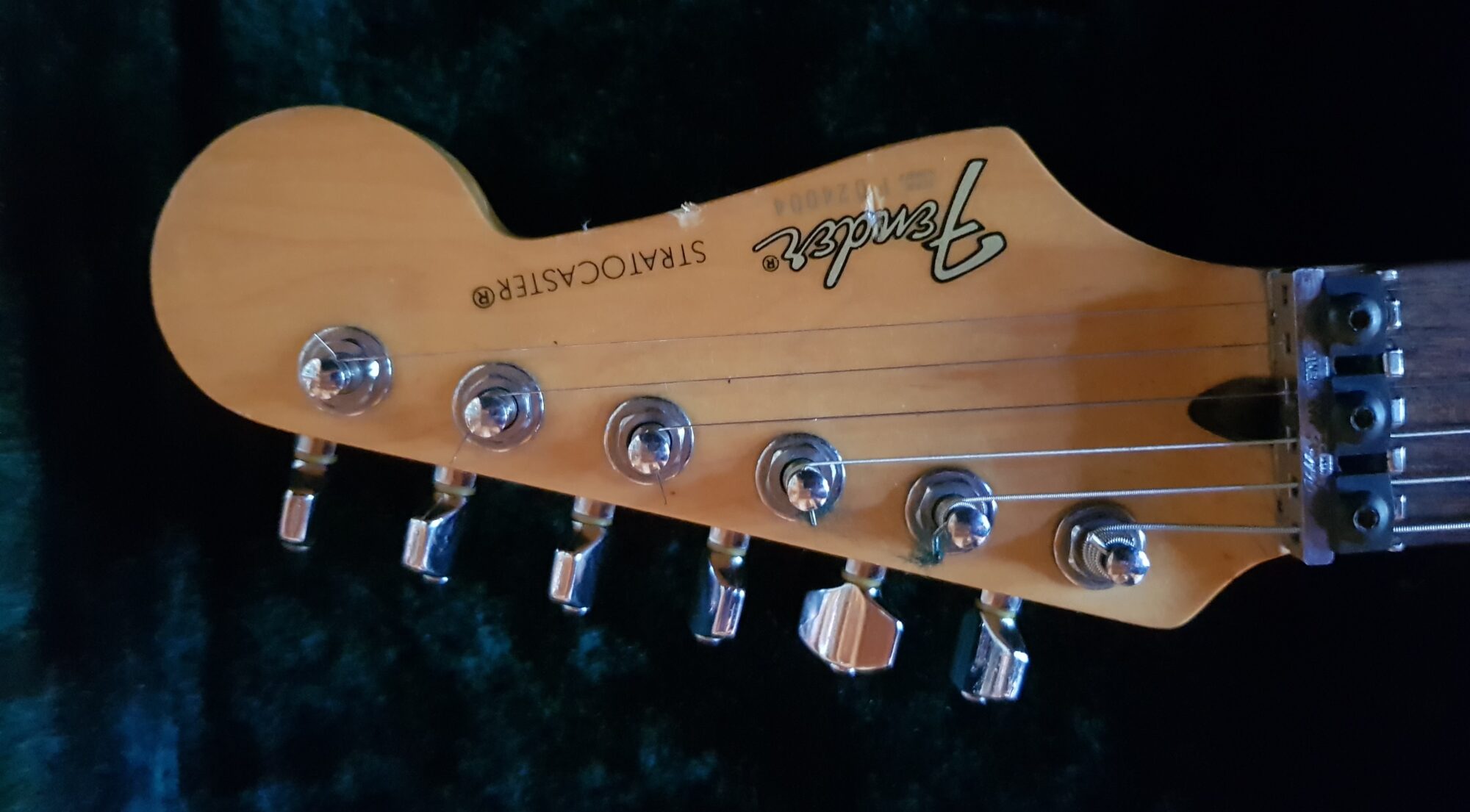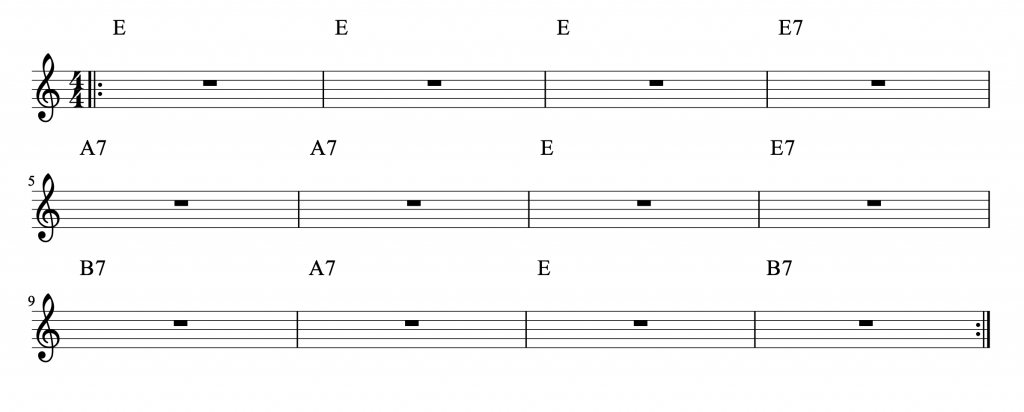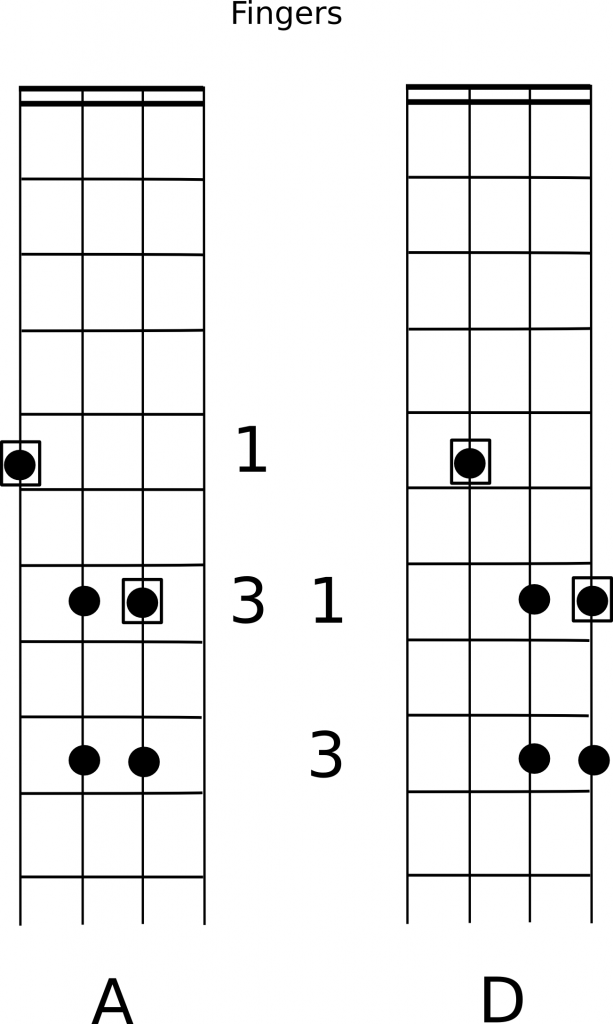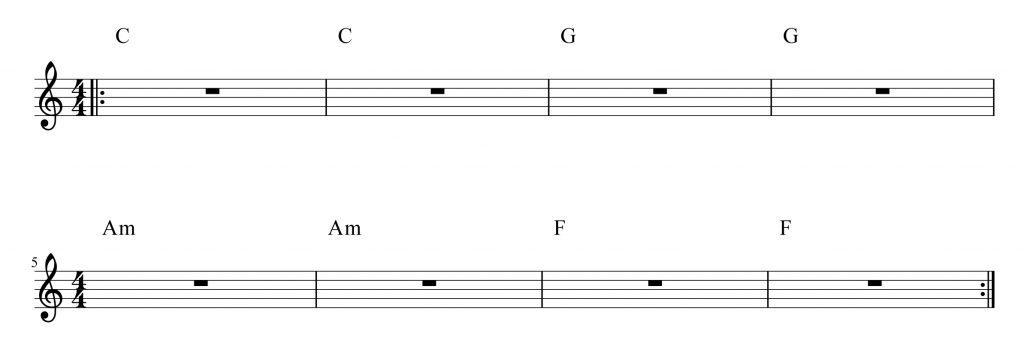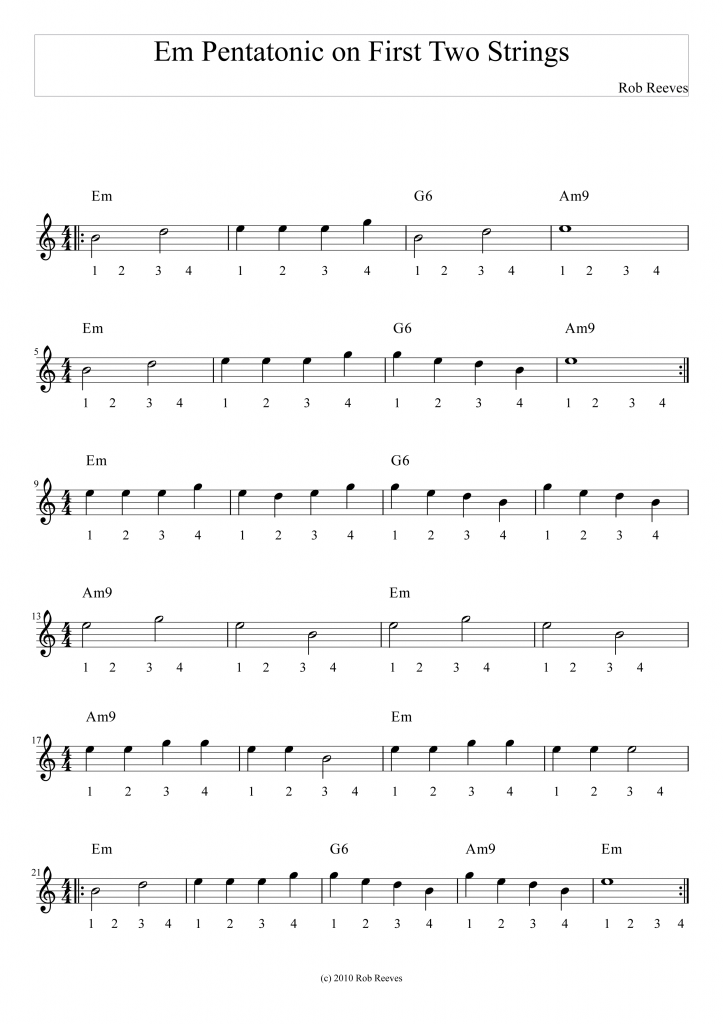One of the songs I teach my beginning students is known affectionately as “Em Pentatonic on the First Two strings”. It uses only four notes, B, D, E and G, and three simple two finger chords, Em, G6 and Amin9 (really A5 add2). Here I have recorded the tune with the melody, and also without the melody so that you can (1) practice playing the melody yourself, and (2) practice making up your own tune (improvising) using the notes B,D, E and G from the E minor pentatonic scale. Of course if you know the entire E minor pentatonic scale, feel free to use it!
Here it is with the melody. Try and play along, reading the melody from your music (the music is printed in Rob’s Guitar Method, Book 1, on page 16).
Em pentatonic practice track – with melody.
When you have played along with the recorded melody above, try the next MP3, which has only the accompaniment. Try to play the melody along with the accompaniment. Then try making up your own tune using notes from the E minor pentatonic scale!
Em pentatonic practice track – no melody.
Have fun!
